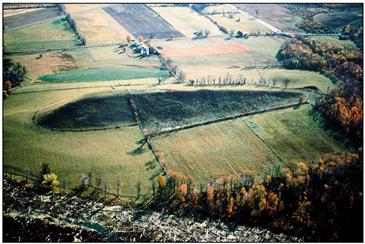
© UnknownDrumlins
One of the puzzles that geologists occasionally ponder is the nature of eskers and drumlins.
Eskers are winding ridges a few tens of metres high that look remarkably like railway embankments. Indeed they are often used as readymade roads and run up and down hills over distances that sometimes stretch to hundreds kilometres.
Drumlins, on the other hand, are tear drop-shaped hills a few tens of metres high and a hundreds of metres long. They often appear in large numbers with the same orientation in drumlin fields .
Geologists have long assumed that eskers and drumlins are formed by glaciers and left behind after these ice giants retreated.
There are essentially two problems. The first is the internal structure of these formations. Eskers and drumlins have have an outer layer of water-borne clay and silt with attendant fossil debris. This covers an inner core made of unsorted boulders and rocks which are entirely free of fossils. These inner cores do not appear to have been affected by the action of water. How does this structure arise?
The second is that if glaciers are responsible for eskers and drumlins, they ought to be forming now. And yet nobody can find anywhere on Earth where these structures are currently forming.
Today, Milton Zysman and Frank Wallace publish on the arXiv their explanation for the formation of these objects and it makes for fascinating, if not entirely convincing, reading.


Comment: For more information, read Laura Knight-Jadczyk's"Meteorites, Asteroids, and Comets: Damages, Disasters, Injuries, Deaths, and Very Close Calls".